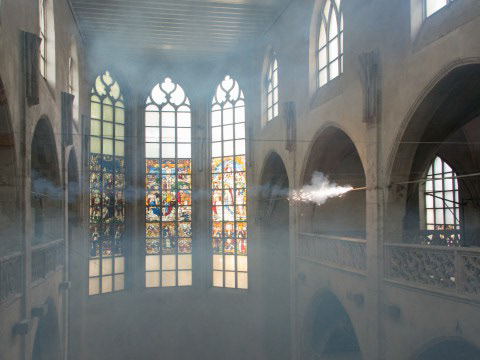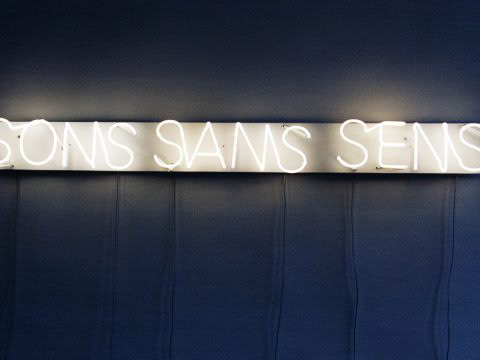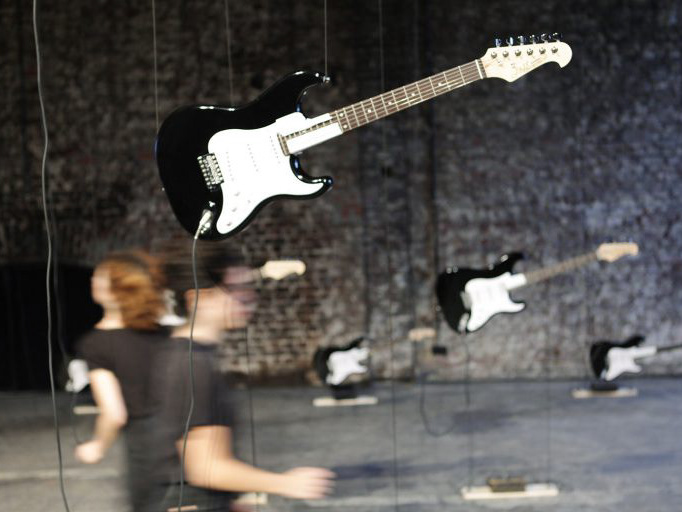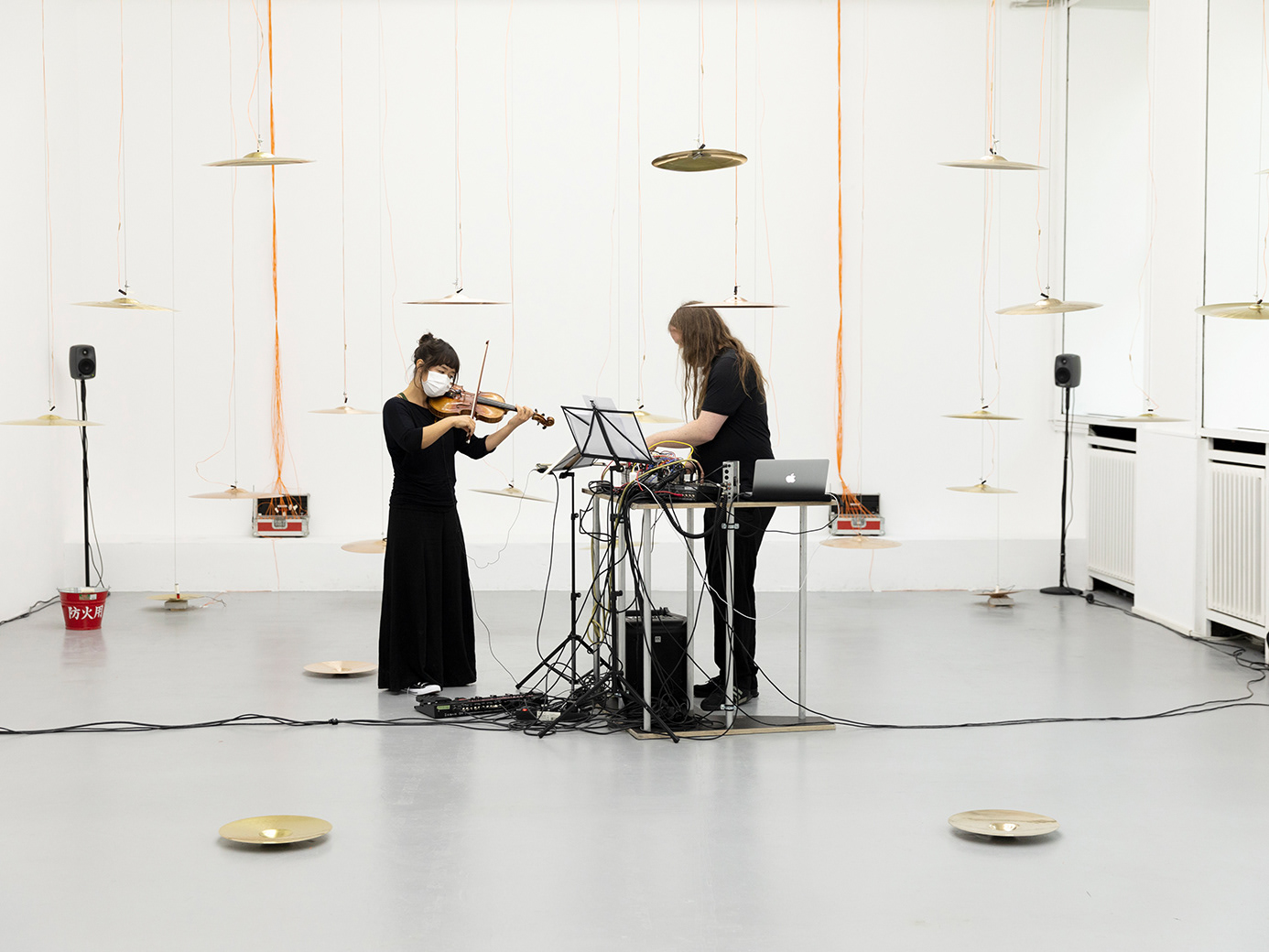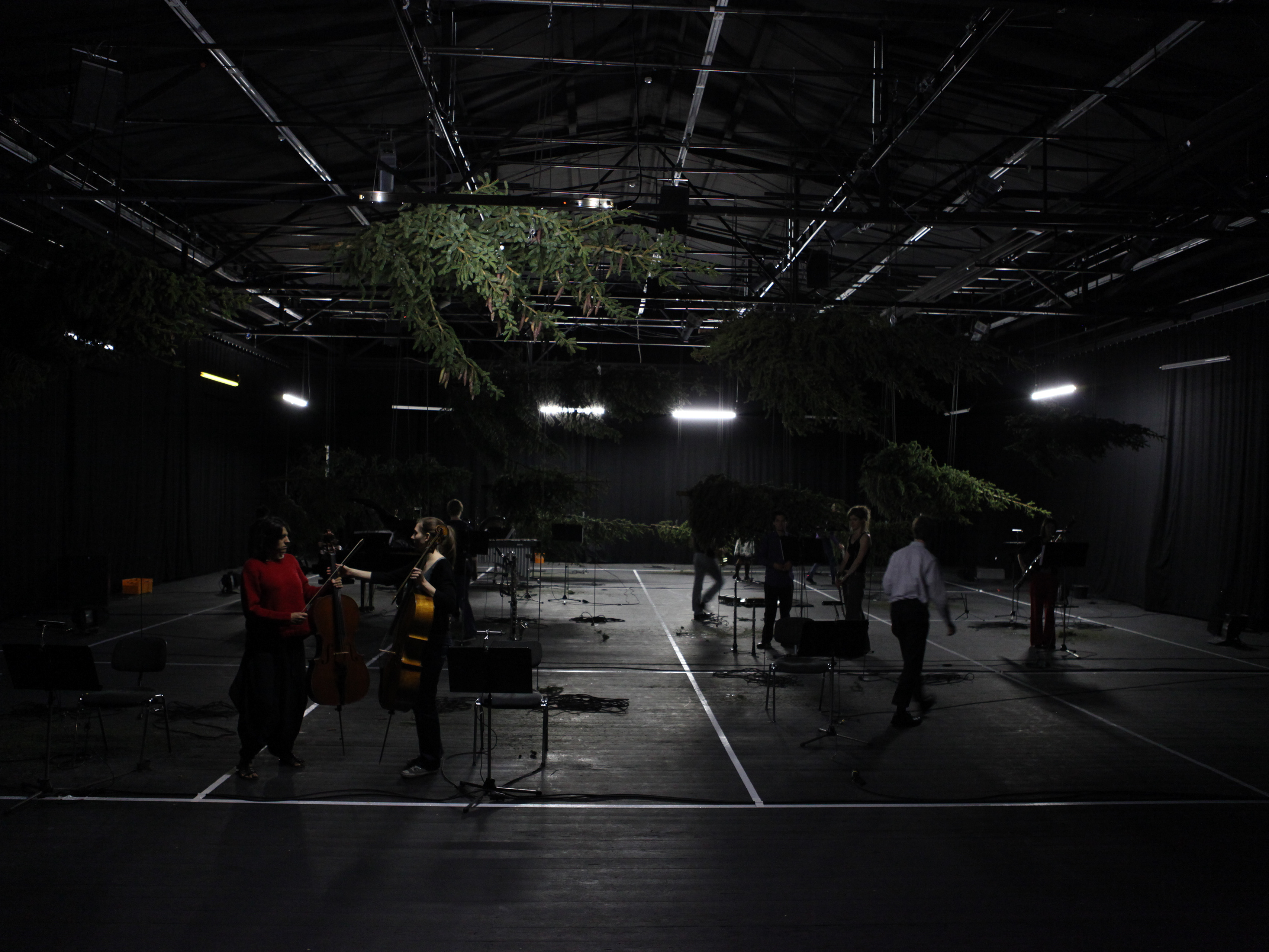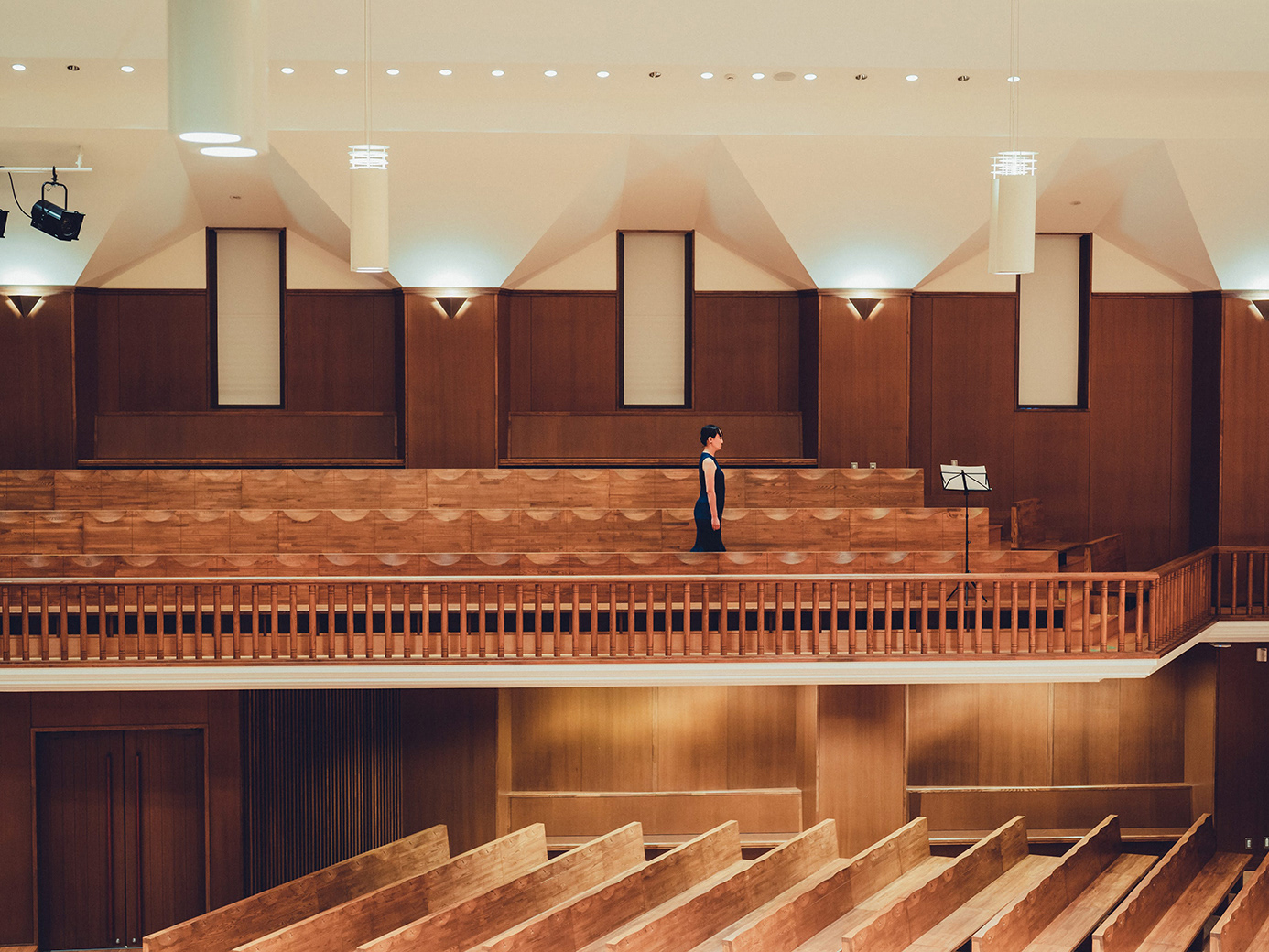Akiko Ahrendt – violin | Dirk Rothbrust – percussion | Tim Hachen – Skateboard | Janosch Pugnaghi – Skateboard | Marcel Weber – Skateboard | Joan Lennard Schubert – sound projection| Lea Letzel – concept
Skateboarders experience urban architecture in a special way. Doing so, they involuntarily transform different surface structures into sound and rhythm. Indoor skateboarding halls accentuate this musical aspect further, especially when the functional noises of the skaters’ tricks are combined with a percussion setup constructed specifically for the performance situation, and with a violin as an instrumental counterpart of the wooden ramps with their amplified resonance. The skaters’ park becomes stage, auditorium and instrument, all rolled into one.
2 SECOND MANUAL takes place on the wooden ramps and constructions of an indoor skatepark, making them not only the stage of the concert, but also the instrument and musical protagonist. The project confronts three different, specialised worlds: skateboarding, contemporary classical music and architecture. It questions the traditional concert hall as the ideal performance space for concerts and musical performances and the composer as the author of sound and movement.
For more information, you can listen to the following features on the project here:
Daniel Ziemann for WDR Tonart:
Leonie Reineke für Deutschlandfunk Kultur:
Moving through the urban landscape on a skateboard allows a physical perception of built structures beyond their pure functionality: architecture is felt with the whole body, experienced in the double sense of the word, and movement is directly and immediately transformed into sound expression. Movement is directly and abruptly transformed into sonic expression. The different surface structures of the city, activated by the roles of the boards is architecture made audible. Nevertheless, since the 1980s, the very own architectures of skate parks have developed as model-like improved variants of the urban landscape in different formal models. Decisive for their development was not only the often ambivalent relationship of cities to their skateboarders, but mostly pragmatic reasons such as simple climatic conditions:
In the Californian midday heat, skating is limited to the cool evening hours, and in the colder central European regions or in North America, basically only to the warmer seasons.
The indoor skate halls, which are mostly built of wooden structures and an improved version of the original urban conditions, make it possible to practise, improve and train the different tricks. Through the repetition of the same thing, the practice of tricks, or the faster sequence of tricks, the rhythmic structures of skating become even more concise.
In the Californian midday heat, skating is limited to the cool evening hours, and in the colder central European regions or in North America, basically only to the warmer seasons.
The indoor skate halls, which are mostly built of wooden structures and an improved version of the original urban conditions, make it possible to practise, improve and train the different tricks. Through the repetition of the same thing, the practice of tricks, or the faster sequence of tricks, the rhythmic structures of skating become even more concise.
Two architectural elements play a special role: the floor in general and the ramp in particular.
"The floor is a sonic environment. People do not ordinarily walk along the edge of rooms tapping on walls, but they are almost always making some percussive sound on the floor." (Koolhaas, Rem; Boom, Irma: Architectural Elements - floor, Marsilio 2014, Venedig)
How can the sounds of skating, which arise from their functionality, be structured and transformed into a musical order? The stage of the concert, the ramps, bowls and halfpipes of a skate park, which simulate reality in a concentrated form similar to a theatre stage, are thus both the form and content of the musical material.
"The floor is a sonic environment. People do not ordinarily walk along the edge of rooms tapping on walls, but they are almost always making some percussive sound on the floor." (Koolhaas, Rem; Boom, Irma: Architectural Elements - floor, Marsilio 2014, Venedig)
How can the sounds of skating, which arise from their functionality, be structured and transformed into a musical order? The stage of the concert, the ramps, bowls and halfpipes of a skate park, which simulate reality in a concentrated form similar to a theatre stage, are thus both the form and content of the musical material.
The percussionist Dirk Rothbrust will develop an instrument for this special performance situation, which is expanded by the performance location (the ramps of the skate park acting as resonating bodies) and responds to the special tonal nature of the space and its protagonists: wooden crates instead of drums, tiles on resonating lists (for rubbing and imitating the rolling and grinding noises), metal sheets instead of cymbals in order to pick up the sounds of the skaters and assemble them into rhythms. The violinist Akiko Ahrendt approaches this special musical dialogue partner through extended playing techniques that on the one hand take up parameters that correspond to the logic of the space, such as physical exertion, loop and repetition structures, and on the other hand also take up the special soundscape of the performance space.
The special architecture of the skate park enables a new form of concert perception for the audience: the structure of the installation provides different possibilities for the audience's position, which, however, do not allow any separation from the performance space.
The percussionist Dirk Rothbrust will develop an instrument for this special performance situation, which is expanded by the performance location (the ramps of the skate park acting as resonating bodies) and responds to the special tonal nature of the space and its protagonists: wooden crates instead of drums, tiles on resonating lists (for rubbing and imitating the rolling and grinding noises), metal sheets instead of cymbals in order to pick up the sounds of the skaters and assemble them into rhythms. The violinist Akiko Ahrendt approaches this special musical dialogue partner through extended playing techniques that on the one hand take up parameters that correspond to the logic of the space, such as physical exertion, loop and repetition structures, and on the other hand also take up the special soundscape of the performance space.
The special architecture of the skate park enables a new form of concert perception for the audience: the structure of the installation provides different possibilities for the audience's position, which, however, do not allow any separation from the performance space.
However, I am particularly pleased to be able to address an audience that has had little or no contact with the concepts of new music through the specific performance venue.
However, I am particularly pleased to be able to address an audience that has had little or no contact with the concepts of new music through the specific performance venue.
Together with the cultural scientist Dr. Konstantin Butz I initiated an introduction to the project, that was held during the „lunch“ format of the festival in the Cologne philharmonic concert hall. We talked about the relationship of Skateboarding, Sounds and Architecture and touched upon all the big questions such as the role of the composer as author or subculture / mainstream and the structural similarities of skateboarding and the independent arts. We are looking forward to publishing a book and vinyl with edition Metzel soon.
